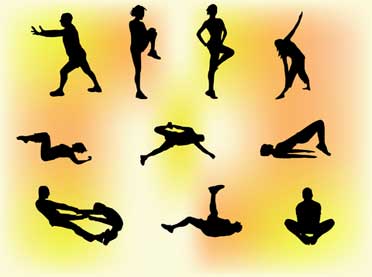Benefits of weightlifting, how to get started with weightlifting, weightlifting exercises and training programs.
Interests of weightlifting movements for hypertrophy
Weightlifting has many benefits for increasing muscle mass. First of all, for those who think that “Weightlifters are not muscular, which might be interesting,” I will answer that many Bodybuilders have a Weightlifting history (Arnold remains the first name to be mentioned!) And this is “Conversely, weightlifters need indicate the weight category, so hypertrophy will not be of interest to them when they reach their ideal weight.
Weightlifting is based on exercises that combine strength and speed. These exercises will improve the recruitment capacity of so-called “fast” muscle fibers, also called type II (or IIa and IIb) fibers. However, as we know, these are muscle fibers that are by far the best potential for hypertrophy.
Weightlifting develops the athlete’s ability to recruit as many muscle fibers as possible as quickly as possible (also called “speed” or “strength performance”), which will result in increased speed, but also and above all, increased strength. Aside from the fact that many of you exercise at least as much to be strong as to be muscular, the gains in strength will allow you to simply use heavier loads during your workouts and thus increase your results in Hypertrophy.
The weightlifting movements used at the beginning of the session activate the central nervous system and cause “potentiation”. Potentiation, also called potentiation after effort, is simply the result of effort at maximum, near maximum or supramaximal speed: the nervous system “wakes up” and activates its “connections” with the muscles, this leads to, therefore, once again, increased recruitment opportunities, which in Your session time will result in heavier workouts for the following exercises (this increase can go up to about 20%, but this figure will not take into account the fatigue generated by a weightlifting exercise session, even if you are only doing a one-move raise range).
With regular practice, movements in weightlifting develop flexibility and improve posture. Flexibility in the main hips, ankles, shoulders and chest will allow you to be more comfortable and be able to use optimal placement during squats, deadlifts, military bench presses, deadlifts and all their variations. Additionally, weightlifting movement emphasizes chest expansion, which can offset the negative effects of sitting posture, as well as overuse of bench press, rolling, or falls that can lead to muscle hypertonia. in the front of the shoulder, which will bend forward (either slightly, or causing more or less pronounced thoracic kyphosis, giving you a Casimodo look. Trust me, walking straight with an open bust is much more attractive than descending like a diplodocus …).
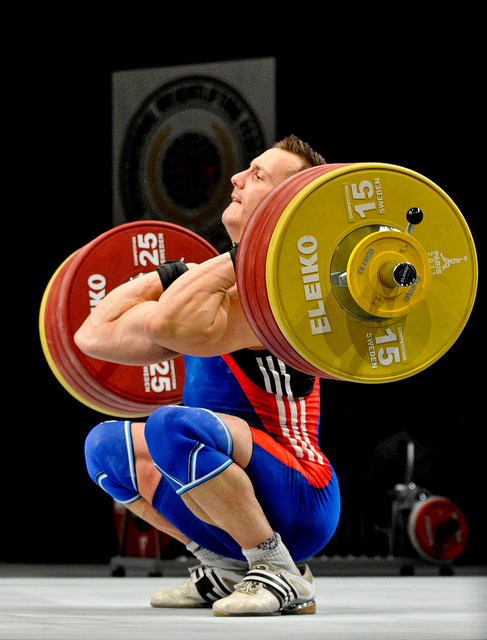
Benjamin Hennequin, -85 kg
Weightlifting moves the whole body. Which means several things:
- Every time you do weightlifting, you put on an abdominal belt, often much better than when doing long overdrive workouts. The two approaches may be complementary at best, but nothing replaces the abdominal work caused by stabilizing the trunk under heavy load.
- You will perform a “reminder” session for all the muscles in your upper body each time you do weightlifting during a leg strengthening session, and vice versa.
- Weightlifting uses many muscle groups that are difficult to develop (or find time to develop) in bodybuilding: calves, hamstrings, psoas and all muscles of the spine, paravertebral muscles, rotator cuff muscles (mainly external rotators) and shoulder girdle (posterior deltoid muscles, rhomboids, middle and lower trapezium), forearms (grip muscles and extensors of the wrist).
- Weightlifting also includes, for the most part, some of the largest and most powerful muscle groups in our body: gluteal muscles, quadriceps, hamstrings, the entire abdominal belt and its antagonists, trapezium muscles three bundles), deltoid muscle , spinal cord, triceps and biceps (more or less in order of importance, although this may differ slightly depending on the athlete’s strengths and weaknesses, as well as the choice of movement options he will make). These muscle groups will account for 80% of your actual muscle volume, making these movements even more fun.
- You will develop your coordination, which will often be reflected in your daily life and other sports activities. Indeed, strength training on a simulator or with a limited range of motion has virtually no effect on coordination, since the body “dissociates” during training. Weightlifting can help fill this weak point.
- You will learn how to optimally position yourself in various movements to reduce the risk of injury.
We have now looked at the reasons that may push you to switch to Olympic bars and magnesium, at least for a while, to the best and … to the best.
However, a few questions remain:
- How to start weightlifting?
- What exercises and variations of the shoulder, throw and javelin should I choose?
- How do I integrate weightlifting into my bodybuilding routine?
This is what we’ll see!
How to start weightlifting?
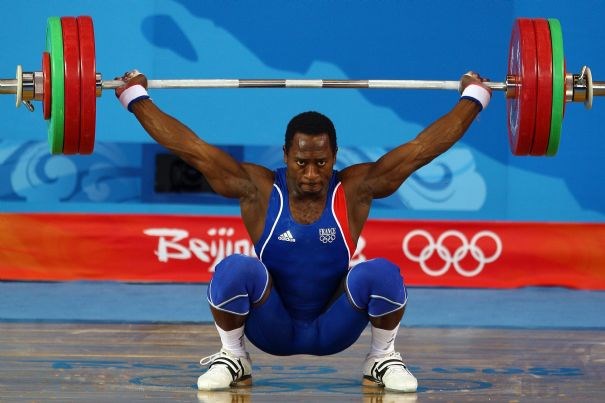
Venselas DABAYA, -69 kg
There are two possible answers to this question:
If you can find a weightlifting room, do so. The subscription won’t cost you much (in most cases, it’s just the price of one). weightlifting license), so it will be profitable even once a week. You will have access to all the quality equipment you need and a qualified coach, and given the difficulty of movement in weightlifting, a good coach is a blessing. You will gradually master weightlifting and the results will show up quickly.
If the first case is not possible, we will choose simple movements at the beginning, these movements, called “semi-technical”, are variations of the shoulder, throwing and javelin, in which the standards of performance and / or range of motion change or decrease. These options are often technically more affordable, although the load to be handled will necessarily be lower (in weightlifting, as opposed to bodybuilding, the more amplitude we use, the more load we can potentially handle).
In the second case, I invite you to read more about the different movement options in weightlifting, as well as some tips for effectively starting weightlifting (if you don’t have a coach) in the Next article Functional Fitness and Weightlifting: Where to Start? .
In both cases, I invite you to watch these two videos (over and over!) to find out what a technically good Clean, Flip, and Pull method is.
Clean and Throw
What exercises and variations of shoulder, throwing and javelin should I choose?
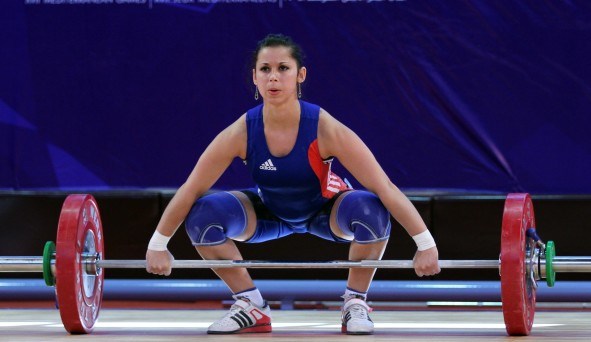
Anais MICHEL, -48 kg
In weightlifting, there are a wide variety of basic movements such as snatch, shoulder and throw. Most of these variations are called “semi-technical” (a technical movement is a movement with its full potential, that is, usually with full amplitude, which is used in competition), is used primarily to correct a technical defect, increase weakness in a gesture, correct placement , the development of strength (in the case of prints), accuracy or simply to obtain the muscle strengthening characteristic of the discipline.
For the bodybuilding practitioner who wants to take advantage of the weightlifting movement of the snatch and shoulder throw, these semi-technical options have a very different interest: they are technically more accessible, which you will often be better.
We will see some of these basic options. Note that in the study of weightlifting, before semi-technical movements are usually educational (or at least used in parallel), these educational programs have no real interest than those related to technical training. and each answering a specific problem, we will not talk about it here. Again, if you really want to learn weightlifting, progress and become a competitor, then a good coach is no substitute. Now back to our semi-methods!
Shoulder, Throw and Spear said “while standing”:
The term used here is confusing. In fact, the standing shoulder lift is equivalent to what the Americans call “Power Clean”, that is, the shoulder with partial flexion (1/4 squat or 1/2 squat) in weightlifting during heavy standing work. , it is not uncommon for the bend to reach parallel, so the term “position” simply means partial bending.
This option is the most basic, as it disables the fear of falling under a loaded barbell, allowing us to enjoy 90% of the inherent benefits of weightlifting movement practice.
The throw is a bit special because the standing throw can be considered a “technical throw” (a throw used in competition) for some athletes who are more comfortable throwing in a standing position than a split throw. A standing throw, however, requires more flexibility around the shoulders and chest than a split throw (during a standing throw, the bust is slightly tilted and the bar is behind the head, more and less in the axis of the back of the skull, in a slot throw, the bar is in the extension of the torso, which is almost perpendicular to the ground). This feature causes many female athletes to shoot in stance, while few male athletes succeed.
Among those who “tamed” the one thrown in an upright position, we note, nevertheless, the legendary Pyrros Dimas.

Benefits: Constant work is easy to learn as it eliminates the fear of being hit by the barbell. This allows you to very effectively develop the strength of the hip extension. It’s easy to learn. For a weightlifter, this allows you to work at lock-on speed (bring the barbell to your shoulders, keeping your elbows high on your shoulder, extend your arm and wrist, then stabilize the barbell in the snatch). Allows you to focus on your draw without thinking too much about it falling (falling corresponds to a pass under the bar).
Disadvantages. It is not uncommon for many beginners in weightlifting to see the shoulder or stance in an upright position with the pelvis moving forward, which is compressed a lot. intervertebral discs.
Demonstration of standing shoulders and subsequent throws. As we can see, the load forces the athlete to increase his flexion in order to support his barbell.
Throw to the shoulder – constant hold (or partial flexion):
Shoulder and Suspension:
The term “suspension” is used to describe a shoulder or snatch during which the bar is held at arm’s length by an aspiring athlete rather than starting on the ground. This variation is often used first in weightlifting because it allows us to “defer” the learning of the starting position (when the bar is on the ground). It is also easier for a beginner to keep his barbell closer to the body during Shoulder or Lance, as it starts close to the athlete’s body.
Benefits: Easy to learn. Allows you to allay fears of falling. Reduces stress on the muscles of the lower back. Excellent accuracy.
Disadvantages: It is not uncommon for many beginners in weightlifting to see a shoulder or jerk in the harness “move” when hitting the barbell, which distorts its optimal trajectory, forcing the barbell to rise in an arc, which often ends the race with a fall on the shoulders or sleepy the athlete’s artery during the Shoulder, or often too far back on the Ruptured (which can be traumatic for the shoulder). So be careful to always start with vertical, not kidney kicks. Also, harnessing can be exhausting to grip (grip) that can fatigue quickly, although traction straps can handle this traction problem, they remain annoying with the shoulder because they limit the wrist’s extension range.
The suspension can also be used at different heights:
- The mid-thigh (or light suspension) load is light, the work is mainly done with confidence in the fall and the accuracy of the pass under the bar.
- Above the knees, the gutter works very well, and the load can be very high, which for many is not the optimal height.
- Under the knees, this allows you to control the trajectory of the bar while keeping the knees passing. The load is also very high and, depending on the strength of the athlete, it can also be at the optimum height.
Shoulder – in suspension (the principle of the spear is the same):
Leverage, dash and force roll:
The term “strength” is also confusing as, contrary to what one might expect, these options are not designed to work on the athlete’s strength, as the loads used are relatively weak The work mentioned in “Strength” corresponds to movement in weightlifting that focuses on the actions of the hands, not the legs.
This time, the athlete does not end his squat race (partial or full), but tiptoe out his legs that have worked, and in these variants the name is shoulder / throw / Rooted.
Here the athlete can focus on the trajectory of his rod, the coordination of the legs with the actions of the arms, and the fixation of the rod in the case of a shoulder and a snatch.
These options are also very often used by weightlifters as an exercise to build muscle mass, since here the movement loses its ballistic character (during ballistic movement, the movement begins and ends with tension, but this tension is lost at some point during the movement (passage under the bar) in favor of continuous tension.
Benefits. Easy to learn. Suitable for specific muscle building and development of strength and coordination. Light loads are therefore not very traumatic. The set of muscles in the upper body is more pronounced. The technical work of the action of the weapon during full movement.
Disadvantages: Too light to create a true Force adaptation (other than a force roll). The lower set of muscles in the lower body. No work aisle under the counter.
Snatch – In Force (same principle as Shoulder or Throw):
Leverage and block reach:
These options are very close to suspended work, since the rod rests on raised supports, which shortens the rod travel.
This option is ideal for athletes whose hip extension is too small, and for those who suffer from lower back pain, indeed, during block work, the pressure experienced by the lumbar region is even weaker than when it is suspended.
Benefits: The coach can adjust the height of the blocks according to the needs of the athlete. The work of speed and accuracy is very important. Allows you to allay fears of falling. Very suitable for batch work versus suspension versus arm endurance.
Disadvantages. May cause athletes who are not used to blocking work to become disoriented. The risk of stroke is also present when the units work.
Supported – sending blocks:
Trick and Pranks – Departure Blocks:
Strength Shoulder, Throw and Dash:
Power work is a movement that starts from the same foot position as during the hold and continues without jumping.
For non-weightlifters, this can allow them to focus on developing strength through coordination and precision work (feet never leave the ground).
For weightlifters, he is primarily a proofreader:
During the snatch and shoulder, this allows you to correct errors that may appear during the pass under the bar, such as jumping forward, jumping backward, too large a distance between the feet.
When throwing, this allows you to focus on hip momentum rather than jumping and going under the bar.
Benefits. This is often easier to do on sets of 3-4 reps. An excellent proofreader. Easier to learn than technical options that require leg movement.
Disadvantages: Very tiring, requires more flexibility during the shoulder and extension, as legs must often be spaced from shoulder-width apart at the start of the toss.
Snatched – valid (same principle as Shoulder):
Abandoned – in power:
Weightlifting Combinations:
Also called “difficult” across the Atlantic, a combination and series of technical and / or semi-technical weightlifting moves that can serve many interests, for example:
- Technical Training,
- Specific strengthening of the weak point during movement,
- Increased total reps, often causing widening.
Therefore, all options are possible, in the first case we will take care of choosing movements that directly eliminate the technical defects of the athlete (for example, if his initial placement is poor, you can tie a slowdown (5 s concentric – 5 s eccentric) with shoulder / lift-off in “touch-start” mode – the athlete begins shoulder / lift-off as soon as the bar makes contact with the ground after 5 with an eccentric, without taking time to change its position).
In the second part, we will choose movements that directly address his weak points in terms of strength or strength, as in the video example below, where a squat follows the shoulder and then a throw, so first to tire the hips and make me have more frank impulse when throwing.
In the last example, we will use motions for which the payloads are relatively similar and are easily related to each other, such as an overhead dash followed by a standing dash followed by a bending dash followed by one or two dash flexion.
Combo is an example with Clean and Throw, but there are all kinds of combinations:
The extended and shoulder draw:
Prints look like traction at first glance. Except that during the draw we try to copy the position and the exact trajectory of the bar, as we do during the snatch or shoulder, and that we speed up the bar by creating a triple extension (simultaneous extension of the ankles, knees and hips) combined with a shrug. as it would be, again, during the snatch or shoulder.
The draw is divided into two large families:
- Heavy stretches that end with triple shoulder stretches, which are primarily used to train the athlete’s strength with a load much greater than what would be used during a shoulder or ripped off.
- High draws that end in a triple stretch with shoulder lifts at the elbows, allowing the athlete to work at maximum loads or get closer to maximum by focusing on starting position and trajectory. bar during the draw.
There are other draws, such as segmented toss (the athlete raises the bar several times), which allow the athlete to work on his position, power draws that use a handle halfway between the shoulder and the snatch, drop-down toss, very used by Asian athletes, during which the athlete passes slightly under the bar at the end of the toss, pushing the legs to the side and slightly bending the legs, lifted draws (the athlete is placed on a plate that increases the distance that the bar has to overcome) or in the harness (the bar starts with a certain height, which reduces the hit “she will have to cover), as well as the Epaule and Pullled dead ends, which are simply traction with the same position and trajectory as the shoulder or snatch, and which end with the shoulders shrugged.
“Heavy” shoulder stretches (the principle is the same as that of the spear):
High Drawdowns:
Once again, most of these options are of primary interest for technical correction in weightlifting. For the bodybuilding practitioner looking to integrate weightlifting into their routine, we can limit ourselves to constant work, in limbo, and perhaps in strength, until we feel comfortable enough to switch to technical options.
Never forget to integrate squats and swirls into your routine, these two movements, besides being very simple, are just two of the best options for developing your lower body, both in aesthetics and aesthetics. in power.
How do I integrate weightlifting into my bodybuilding routine?
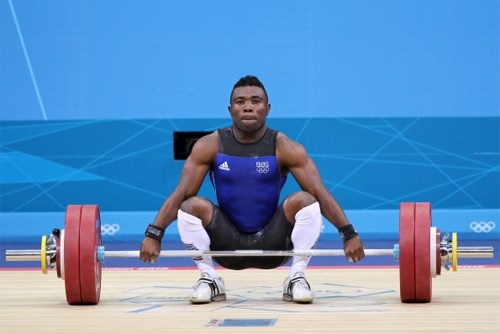
Bernardine KING-MATAM, -69 kg
Two possibilities, again here:
The first, and probably the most beneficial for hypertrophy, is to begin every resistance training session with weight lifting to take full advantage of the post-effort potentiation, as we saw above.
The second is to devote special training to weightlifting, in large part or in general.
Here are some programming examples that use one or both of these features:
Program 1 – Full Body
This program is simple and effective, and is especially suitable for beginners and people with less than two years of strength training in their belt. In such a case, the supervision of the weightlifting coach is essential. Explain well, if this is your case, that you want to do weightlifting for fun and form, and therefore you will combine bodybuilding, your main goal is not to do weightlifting exercises.
We will alternate between two sessions, three to four sessions per week. Nothing fancy if on Monday you do Session 1, Session 2 on Wednesday, Session 1 on Friday, Session 2 on the next Monday, etc., e.g.
Session 1:
1) Shoulder-throw (option of your choice, Shoulder in a standing position + Throw in a standing position, Shoulder in suspension + force in a Throw position, Shoulder in a standing position + Spring +): 2 × 3 at 60%, 3 × 3 @ 70%, 2 × 2 @ 80%, 2 × 1 @ 90% Maxi (adjustable as selected), RIS 2 to 3 minutes
2) Neck Squats:
5 × 5 at 75-80% of Maxi, RIS 2 to 3 minutes
3) Rows (your choice):
4 × 6-8 reps, RIS 1 to 2 minutes
4) Falls:
4 × 8-12 reps, RIS 1 to 2 minutes
5) Sheathing or press of your choice in about 5 minutes.
Session 2:
1) Snatch (snatch power, snatch suspension, snatch snatch + snatch squat …): 2 × 3 @ 60%, 3 × 3 @ 70%, 2 × 2 @ 80%, 2 × 1 @ 90% max … (subject to adjustment) depending on the option chosen), RIS from 2 to 3 minutes
2) Draws of draws: 5 × 5 at 100% of draws Maxi, RIS from 1 to 30 minutes
3) Bench press: 4 times for 6-8 reps in 70-80% of Maxi, RIS from 1 to 30 minutes
4) Dumbbell for rowing with one arm:
4 × 8-12 reps / arm 65-70% of Maxi, RIS 45 seconds between each arm
5) Sheathing or press of your choice in about 5 minutes.
Program 2 – Lower Body – Upper Body – Whole Body
This split is a classic classic that works and works well for the long term.
In one session you work with the lower body in bodybuilding, in the other you work with the upper body in bodybuilding, and in the next you work with the whole body, which will work here in weightlifting. Therefore, this split can be done in two workouts at the gym and then at the gym.
Session 1:
1) Squats on the neck:
5 to 80%, 4 to 85%, 3 to 90%, 5 to 80%, 4 to 85%, 3 to 90%, 5 up to 80%, from 3 to 85% RIS from 2 to 3 minutes
2) Front lunges at a barbell or dumbbell in a superset with hip extension on one leg:
3 x 10 + 10 reps @ 60-70% of Maxi, RIS 1 minute
3) Leg extensions in superset with leg curls:
2 × 8 + 4 + 3 reps (as a set of throws or series in a rest pause), RIS from 1 to 2 minutes
4) Padding or abdominals of your choice for about 5 minutes.
Session 2:
1) Barbell rowing, bust tilted 45 °: 5 × 5 at 75-80%, RIS 2 to 3 minutes
2) Bench press: 5 × 5 at 75-80%, RIS 2 to 3 minutes
3) Rows (your choice):
4 × 6-8 reps, RIS 1 to 2 minutes
4) Falls:
4 × 8-12 reps, RIS 1 to 2 minutes
5) Pulls the face with a low pulley (facepulls):
3 × 12-15 reps, RIS 1 minute
6) Sheathing or press of your choice in about 5 minutes.
Exercises 3) and 4) can be a superset, like exercises 5) and 6).
Session 3:
1) Snatch (Power Snatch, Suspension Snatch, Snatch Snatch + Snatch Squat …): 2 × 3 @ 60%, 3 × 3 @ 70%, 2 × 2 @ 80%, 1 × 2 @ 85%, 2 × 1 @ 90% Maxi (configurable as selected), RIS 2 to 3 minutes
2) Shoulder-throw (option of your choice, Shoulder in a standing position + Throw in a standing position, Shoulder in suspension position + Power in a push, Shoulder in a standing position + Fortitude in a throw …):
2 × 3 at 60%, 3×3 @ 70%, 2×2 @ 80%, 2×1 to 90% of Maxi (configurable as selected), RIS 2 to 3 minutes
3) Deadlift or Shoulder Gestures:
3 × 4 100% of the pull or shoulder maxi, 2 × 3 105% of the pulled or shoulder maxi, RIS 1:30 to 2 minutes
4) Squat clavicles: 1 x 5 to 70%, 2 x 4 to 80%, 2 x 3 to 85%, 2 x 2 to 90%, 1 x 1 to 95%, RIS from 2 to 3 minutes
5) Sheathing or press of your choice in about 5 minutes.
Program 3: Le Push – Deadlift – Legs
Another very classic split, this time focusing on pushing, another on pulling, another on lower body.
A solid and effective classic that will allow us to do light weight lifting with every workout.
Session 1:
1) Throw (option of your choice, Throw, strength, position or strength):
2×3 at 60%, 3×3 at 70%, 2×2 at 80%, 2×1 at 90 % of Maxi (configurable according to the selected option), RIS from 2 to 3 minutes
2) Bench press: 5 × 5 at 75-80%, RIS 2 to 3 minutes
3) Military dumbbell designed:
from 4 × 10 to 70%, RIS from 1’30 to 2 minutes
4) Falls:
3 x 12-20 reps, RIS 1 to 2 minutes
5) Sheathing or press of your choice in about 5 minutes.
Session 2:
1) Snatch (Power Snatch, Suspension Snatch, Snatch Snatch + Snatch Squat …): 2 × 3 @ 60%, 3 × 3 @ 70%, 2 × 2 @ 80%, 1 × 2 @ 85%, 2 × 1 @ 90% Maxi (configurable as selected), RIS 2 to 3 minutes
2) Draws of snippets: 5 × 5 at 100% Maxi break, from 1 to 30 minutes per pic.
3) Rows (of your choice):
4 × 10, RIS from 1’30 to 2 minutes
4) Rowing on a pulley in a superset with birds Dumbbell:
3 × 12-15 + 12-15, RIS from 1 to 2 minutes.
5) Sheathing or press of your choice within 5 minutes.
Session 3:
1) Shoulder (option of your choice, standing shoulder, hanging shoulder, block shoulders …): 2 × 3 at 60%, 3 × 3 at 70%, 2 × 2 at 80%, 2 × 1 at 90% maxi (subject to adjustment) depending on the selected option), RIS from 2 to 3 minutes
2) Squats on the neck:
5 to 80%, 4 to 85%, 3 to 90%, 5 to 80%, 4 to 85%, 3 to 90%, 5 up to 80%, from 3 to 85% RIS from 2 to 3 minutes
3) Front lunges at a barbell or dumbbell in a superset with hip extension on one leg:
3×10 + 10 reps at 60-70% of Maxi, RIS 1 minute
4) Superset Leg Extensions with Leg Bends:
2 × 8 + 4 + 3 reps (set or series in rest pause), RIS 1 to 2 minutes
5) Sheathing or press of your choice in about 5 minutes.
Program 4: Agonist – Antagonist
This time a little finer planning, but it couldn’t be more efficient. This allows us to take advantage of multiple weightlifting movement options and also provides the opportunity to start each of our weightlifting sessions to make the most of the post-effort potentiation and its consequences.
Given the volume of training, this program is more suitable for practitioners with at least 3 years of bodybuilding experience.
Session 1. Shoulders + back.
1) Hook (standing, hanging, blocking or flexing) + Snatch Squat:
2×3 @ 60%, 3×3 @ 70%, 2×2 @ 80%, 1×2 @ 85% , 2×1 @ 90% Maxi (configurable according to selected option), RIS 2 to 3 minutes
2) Military training:
4 × 6-8 at 70-80%, RIS 1’30 in 2 minutes
3) Rows (of your choice):
4 × 6-8 at 70-80%, RIS 1’30 in 2 minutes
4) Side marks (of your choice):
3 × 12-20, RIS from 1 minute
5) Birds (of your choice):
3 × 12-20, RIS 1 minute
6) Pullover with dumbbells on a bench:
2 × 12-15, RIS 1 minute
7) Sheathing or press of your choice in about 5 minutes.
Exercises 2) and 3), 4) and 5) and 6) and 7) can be performed on a supernet.
In exercise 1 snatch + squat – repetition.
Session 2 – Biceps + Triceps:
1) Force Snatch: 3 x 3 to 40%, 2 x 2 to 45%, 1 x 2 to 50%, 2 x 1 to 55% of Maxi with Pulled, RIS 2 to 3 minutes
2) back pull:
3×10 reps, 1 to 2 minutes RIS
3) Dips: 3×10 reps, 1 to 2 minutes RIS
4) Sloping curls OR concentration (depending on your weakness):
3 × 12-20, RIS 1 minute
5) Extending triceps over the neck to one arm:
3 × 12-20 reps per arm, RIS 1 minute
6) Sheathing or abdominals of your choice in about 5 minutes.
Exercises 2) and 3) as well as 4) and 5) can be done in the extended group.
Session 3 – Legs
1) Shoulder-throw (option of your choice, Shoulder in a standing position + Throw in a standing position, Shoulder in suspension position + Power in a push, Shoulder in a standing position + Fortitude in a throw:
2 × 3 at 60% , 3×3 @ 70%, 2×2 @ 80%, 2×1 to 90% of Maxi (configurable as selected), RIS 2 to 3 minutes
2) Torn off (variant differs from the variant with shoulder session): 2 × 3 at 65%, 2 × 2 at 75%, 1 × 2 at 80%, 2 × 1 at 90% of Maxi (adjustable according to selected option), 2 to 3 minutes RIS
3) Squats on the neck:
5 to 80%, 4 to 85%, 3 to 90%, 5 to 80%, 4 to 85%, 3 to 90%, 5 up to 80%, from 3 to 85% RIS from 2 to 3 minutes
6) Gestures with extension or extension:
3 × 4 at 100% of maxi with extension or over the shoulder, 2 × 3 105% of maxi with extension or over the shoulder, RIS From 1:30 to 2 minutes
4) Unilateral leg extensions in a superset with unilateral leg bends:
2 × 8 + 4 + 3 reps (as a set or series in a rest pause), RIS 30 to 45 seconds between each leg
5) Sheathing or press of your choice in about 5 minutes.
Session 4 – Chest – Upper back (trapezoid, rhomboids, posterior deltoids …)
1) Shoulder Strength + Throw Power: 3×3 @ 50%, 2×2 @ 60%, 2×1 @ 70% Max, RIS 2 to 3 minutes
2) Bench press: 5 × 5 at 75-80%, RIS 2 to 3 minutes
3) Rowing slope tilted at 45 °: 5 × 5 at 75-80%, RIS 2 to 3 minutes
4) Developed Dumbbell Prone: 3 × 12 to 65% of Maxi, RIS 1 to 2 minutes
5) Facepulls:
3 × 12, RIS in 1 minute
6) Sheathing or press of your choice in about 5 minutes
Of course, these programs are just examples, you can change some of the exercises, the number of approaches or reps according to your preference and your material.
Weightlifting & Bodybuilding – Conclusion:
First of all, I would like to thank my training partners who allowed me to film them during the sessions to provide you with video examples of exercise options.
Then I would like to clarify that in these videos we are not champions (with the exception of Adeline :-)) and our actions do not claim to be free of any errors, these videos have been all before, to give you a concrete idea of what this gesture should look like, and I honestly think that for a bodybuilding practitioner who would add a little weightlifting to their program to benefit from the effects we have mentioned, this quality of gesture would be more than enough.
And until (almost) the finish line, I am not a weightlifting coach, in other words, if you do weightlifting and your coach shows you that I am wrong, he is probably at least partially right, or by at least as far as you or him is concerned, I am not omniscient, I do not have a universe of science or absolute truth, and above all, I do not know you personally (for the most part, at least!) and therefore I am not the most inclined to judge. what’s good for you.
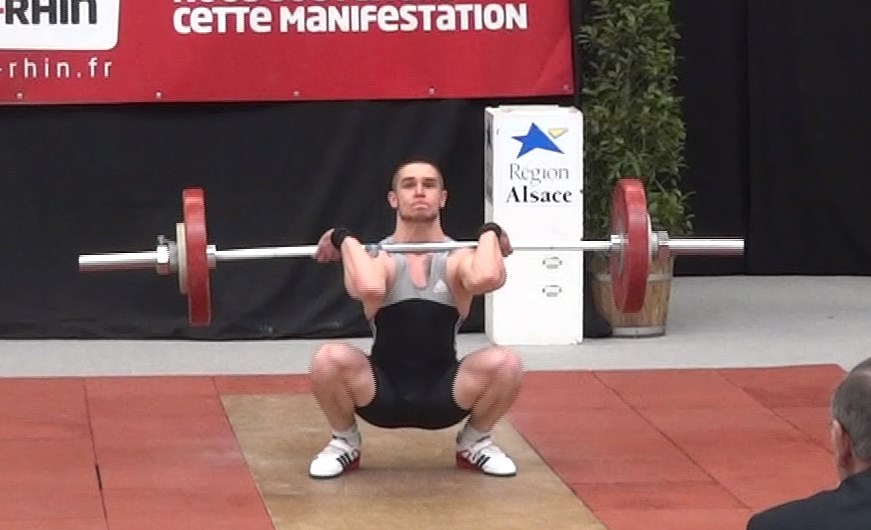
That said, the benefits that weightlifting can bring, which I mentioned at the beginning of this article, are real. It’s up to you if you can use them yourself, and make sure you are an athlete, bodybuilder or a hard worker!
And if, at its best, this article is enough to convince you to walk through the weightlifting room and discover this wonderful sport, I would have fulfilled my role and be completely satisfied.


